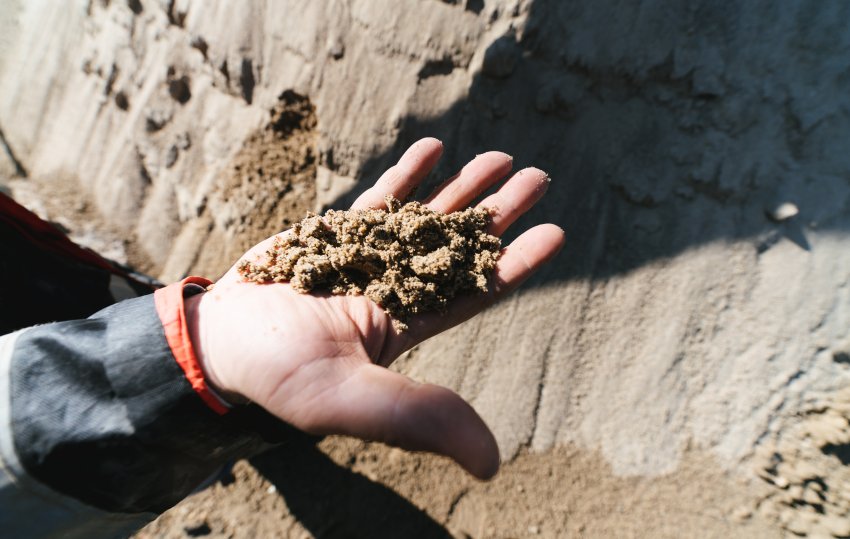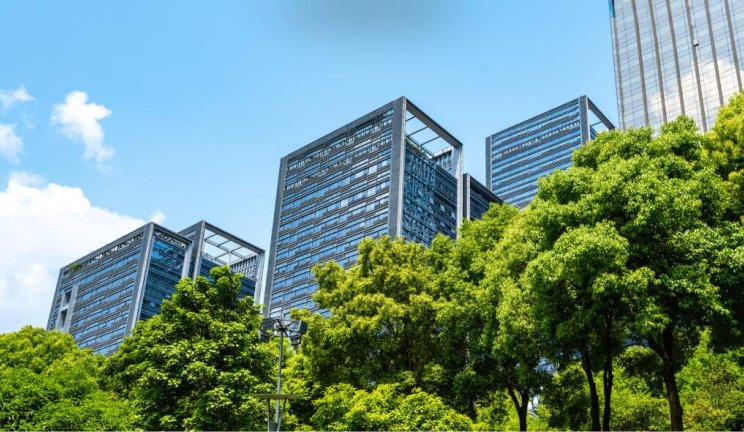
Solutions for limiting the environmental impact of construction activities, and energy and mobility infrastructures
Whether facilitating mobility, improving our living environments or ramping up the energy transition, the Group’s concessions, energy and construction businesses are harnessing their innovative streak to transform their practices and thereby reduce their impact on the environment. Time for an overview of some tried-and-tested solutions.
Building and operating infrastructures while producing green energy
Buildings and infrastructures are constructed on soil-sealed land to meet a wide range of needs, such as mobility, housing, communication and energy. But these sites can also be used to satisfy other requirements in addition to serving their main purpose. This is especially the case when mobility infrastructures, such as roads, motorways, airports and railways, enable people to travel while helping produce green energy.
Power Road®, the positive-energy road
What if roads were capable of heating buildings? This is the new feature that VINCI Construction is bringing to roads with the Power Road® solution. The system captures the heat from the road surface and either releases it for immediate use or stores it for later, according to requirements.
The solar potential of motorways, railways and airports
SunMind: unlocking the potential of solar energy
SunMind finances and develops photovoltaic plants, especially on the buildings and land occupied by VINCI Concessions’ airport, motorway and railway infrastructures.
Equipping these infrastructures with solar power plants, particularly to cover their own energy needs, is an important strategy for reaching net zero emissions by 2050 for Scopes 1 and 2 (direct greenhouse gas emissions).
44 MWpc
of installed power on VINCI Concessions’ infrastructures
1,2 GWc
of potential capacities identified on VINCI Concessions infrastructures
Solarvia: transforming unused motorway-side land into solar power plants
Through its subsidiary Solarvia, VINCI Autoroutes develops solar farms on its land takes and specifically on areas skirting roads and motorways that once served a purpose, but which have since fallen into neglect.
The former asphalt production platforms, land areas inside interchange loops and generally the land alongside motorways are all large, unused areas that are ideally suited to accommodating solar power plants.
Raphaël Ventre, Marketing and Services Director at VINCI Autoroutes.
Using materials from the circular economy for building and renovating
Aggregates are an essential material for manufacturing concrete, building roads and urban development projects, and constructing buildings and civil engineering structures. They are the most widely used resource in France after water, accounting for 5 tons per capita per year. However, natural aggregates from quarries are not available in endless quantities, and extracting them has an impact on the environment. Solutions using materials from the circular economy are available and entering widespread practice in the construction industry.
Construction aggregates from the circular economy
VINCI Construction is mainstreaming the use of formulated aggregates, which are produced from excavated earth, materials recovered from local deconstruction projects or industrial co-products, for its road construction and maintenance activities. These aggregates from the circular economy comprise primary resources and secondary resources from its local recycling centres.
Recycling motorway asphalt
Maintain or resurface motorways by recovering and recycling asphalt on site... such is VINCI Autoroutes’ strategy for reducing its dependency on raw materials and lowering its CO2 emissions. Up to 70% of asphalt aggregates are recycled and reused at a plant located near the worksite to cut down on transport.
Rehabilitating brownfield sites to reduce land take
Land take is one of the culprits behind biodiversity loss and global warming. As buildings and infrastructures continue encroaching upon natural spaces with growing speed, action must be taken. That is why the objective of no net land take by 2050 is enshrined in France’s Climate and Resilience Act. VINCI Immobilier is using a powerful lever to reach this target by 2030, namely rehabilitating brownfield sites.
Check out our report on soil sealing at:
Transport and travel at sites and worksites
Several action levers are available for decarbonising all types of worksite. Reducing the CO2 emissions from work-related travel and worksite vehicles represents a tremendous opportunity.
In 2022, VINCI Energies rolled out a solution for improving service rounds and thereby cutting down on the number of kilometres travelled, as well as switching the fleet over to electric vehicles and setting up charging points on company premises and at employees’ homes. At the same time, a scheduling, monitoring and decision support app has been developed for evaluating the carbon footprint of worksite vehicles and tracking their CO2 emissions. These are just some of the initiatives that are delivering results..
50%
of VINCI's worksite vehicles are equipped with a tool for monitoring their energy use
12%
of the vehicles in the VINCI Group’s fleet were electric or plug-in hybrids
Sources :
L’industrie française des granulats - UNICEM/UNPG - Edition 2022
Subscribe
Stay tuned : receive our newsletter
Every quarter, discover new articles, exclusive features and experts' views delivered straight to your inbox.
Most viewed
Explore more
Marina Lévy - Companies at the heart of ocean conservation issues
Marina Lévy, oceanographer, research director at the CNRS and ocean advisor to the president of the French National Research…
Building with and for nature
Whether creating barrages, stripping away topsoil, cutting down trees or digging channels, humans have spent thousands of…
Bridging the construction gender gap: paving the way to a career in industry for women in Colombia
In 2025, the Ruta 40 consortium led by VINCI Construction Grands Projets completed work on widening and upgrading the Bogotá…


